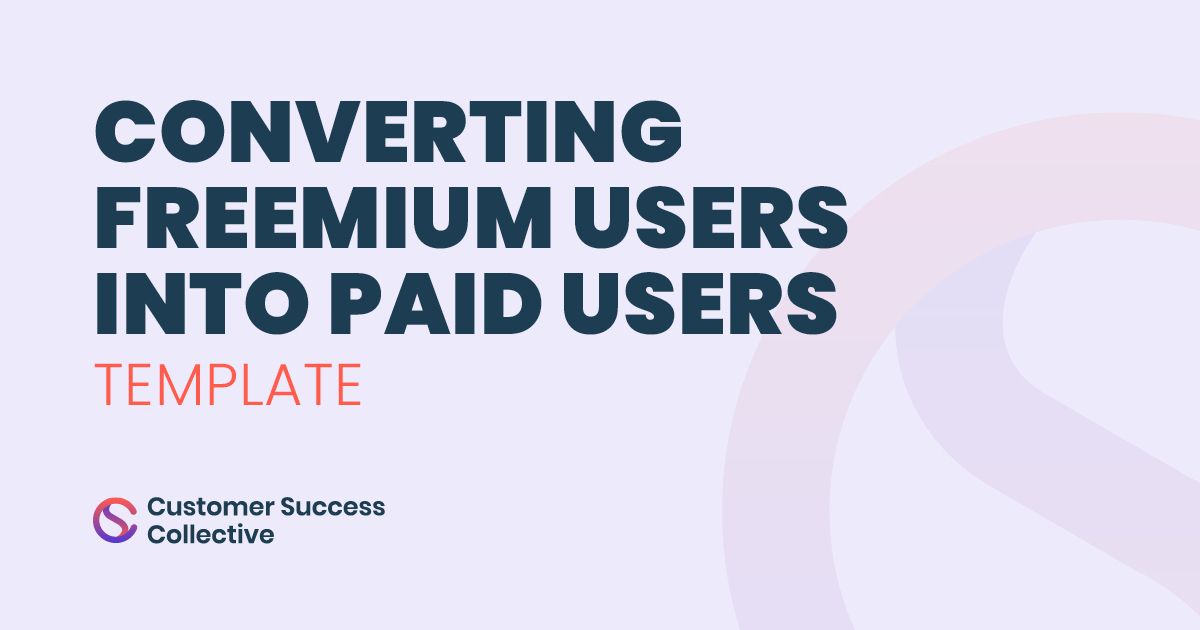A company's success hinges on the satisfaction and success of its customers. But what does it mean to monetize customer success operations? How can businesses focus on delivering genuine value to their clients, while also improving their bottom line?
Drawing from my 17-year-long career journey with organizations like Cisco, McAfee, SonicWALL, and DocuSign, I’ll reveal how businesses can:
- Transition from viewing customer success as a cost function to a revenue function,
- Reap the benefits of segmented customer-centric plans,
- Overcome roadblocks, and
- Fully utilize the vital role of Customer Success Managers.
Whether you're an executive considering new ways to leverage customer success, a Customer Success Manager (CSM) looking to expand your skills, or simply interested in the future of post-sales operations, expand your knowledge with these invaluable insights.
Carry on reading this article as we delve deep into the nuances of customer success monetization and explore how this approach can propel both your customers' success and your company's growth.
Shifting the perspective to view customer success as a revenue driver
The fundamental shift that businesses must undergo is transitioning from viewing customer success (CS) as a cost function to viewing it as a revenue function. When CS is treated as a “freebie,”' corners may be cut, potentially leaving your CSMs stretched thin over multiple clients, which can affect the quality of service provided.
While this approach might work when dealing with smaller customers or if you're aiming to scale, it falls short with large enterprise customers such as top-tier banks or tech giants like Google or Facebook.
These are clients who require “white glove” treatment – a service level where a freebie model doesn't suffice. These customers, with their unique personas, are willing to pay for premium, personalized services, as long as they receive value.
In response to this realization, we engaged with our clients to understand their needs and requirements better. This feedback guided us back to the drawing board, where we developed tailored service packages. A Product Manager on our team did an excellent job gathering all the customer feedback that formed the foundation of these packages.

Instead of offering merely the services of a CSM, we constructed an “experience package.” This included professional service hours to assist with implementing new products or services, education hours to empower the customer to get the most benefit from the product or service, health checks, architecture reviews, adoption consulting, and of course, the services of a CSM.
In providing such a comprehensive service, we were able to monetize our customer success operations. This initiative also allowed us to maintain healthy margins as we had control over where we placed our costs, whether locally or remotely.
This project was a success because we offered tiered success plans, each catering to different customer personas and requirements. These plans varied from adding technical resources in high-end plans to just providing CSM resources in lower-end plans.
In the end, the flexibility in these variations is key. This way, you can cater to a wide array of customer needs and preferences, thereby driving revenue while delivering superior customer success.

Overcoming the challenges of monetizing customer success
Challenge #1: Educating your sales team 🎓
One of our first challenges was re-educating our sales team. They were accustomed to the freebie model, but we needed to illustrate why this new package approach was more beneficial.
By committing to deliverables, we ensure that our customers are not only consuming the product but also adopting it. This commitment ultimately leads to customer retention, upselling, and cross-selling opportunities. However, changing our approach wasn't an overnight transformation, it took years of educating various parts of our organization on our new direction.
In addition, we had to establish clear collateral detailing our deliverables and selling points to assist our sales team. At times, it was necessary to step into their deals to help pitch the success plans to customers. As they began to see the benefits of these plans and the potential for increased commissions, the transition gradually took place.

Challenge #2: Collaborating across different functions 🧩
When you're including so many elements in a package, each function involved must cooperate.
For instance, if we're adding professional services hours, a portion of the package costs must be allocated to the professional services team. This requires seamless collaboration between functions such as education, health check, and finance in order to deliver these success plans.
Challenge #3: Altering the mindset of your CSMs 🧠
This change involves making them responsible for the entire customer journey and ensuring they're delivering on the metrics we've promised to the customers as part of their success plan. This shift necessitates substantial coaching, guidance, and training for the CSMs.
In summary, the top challenges in this transition are collaboration across various departments, reshaping the mindset of sales, and reorienting the perspective of our CSMs.
What you need to consider before you monetize your customer success function
The evolution of a startup requires a certain flexibility in the way business operations are managed. The early stages demand a focus on acquiring as many customers as possible and ensuring their success with the product. However, as the company matures, it becomes beneficial to consider monetizing the services that contribute to this customer success.
As a mid-tier or larger company considering the move to monetize your success plans, the first step is customer segmentation. Understanding the spending habits and size of your customers allows you to categorize them effectively.

For instance, high-tier customers might spend over $20 million, mid-tier customers could range between $5 million and $10 million, while low-tier customers could fall anywhere between $1 million and $5 million. It's important to bear in mind that these values will vary based on the nature of your business.
Once you have your segments, the next step is to understand their requirements for product adoption. Are there high staff turnover rates requiring consistent education for new administrators? Do they lack the in-house expertise and hence need professional services? Answers to such questions will guide you on what to include in your package.
After establishing what your package will contain, you need to calculate the cost of delivering it. To this cost, it's advisable to add a healthy margin of around 35% before presenting the price to your customers.
Implementing such changes should never be done abruptly. Pilot the new approach with a small section of your customer base to gauge their response. This will provide valuable insights that can help refine the success plans.
Additionally, different sectors may require customized success plans due to their unique needs. Banking and education sector customers, for instance, may have very different requirements.
A crucial element throughout this process is the involvement of your sales team. They will be instrumental in selling these success plans and should therefore be included every step of the way.
Monetizing your success plans requires a balanced mix of customer understanding, cost and revenue considerations, and effective team collaboration. Done correctly, it can significantly enhance your company's revenue stream while ensuring the continued success of your customers.

A final word of advice for CS leaders looking to monetize their customer success function
As a customer success professional, I can't stress enough how vital your role is in the realization of success plans. We may design these strategies as executives, but the actual execution and delivery lies in your capable hands.
You're not just a piece of the puzzle; you're the guiding force navigating the customer through their entire lifecycle with us.
My advice can be summed up in three key points:
1. Adopt a holistic approach
You are not just facilitating a service; you're an ally to the customer, a trusted advisor. From the moment they join us, through implementation, product adoption, any arising issues, and business reviews, you are there.
You guide the conversation around renewals, upselling or cross-selling opportunities, and portfolio enhancements. Their success mirrors your success, and this is a mindset shift we need to make.
2. Transition from a reactive role to a proactive one
Don't wait for the customer to come to you; you should be so tuned in to their needs and patterns that you can anticipate their requirements. For example, if they're going through an upgrade, you already know whether their other complementary technologies are in sync or not. You can foresee potential issues and address them proactively.
3. Focus on planning and preparation
Your understanding of the customer's journey should be so comprehensive that you can navigate them seamlessly from one step to the next. Aligning yourself hand in hand with the customer and advising them on the best way forward will ultimately foster a successful partnership.

Want to level up as a customer success leader?
If you enjoyed reading what one of the world’s brightest CS leaders had to say, you might want to enroll in our Customer Success Leadership Accelerator program and become one of tomorrow's champions of customer success.
What to expect in this nail-biter of a course
🧠 Non-stop, actionable insights
🔧 Practical applications every week
🤫 Total privacy with your closed CS leadership group
👥 Tons of networking opportunities
📚 Hands-on coursework activities
💡 Endless ideas from your peers and presenters
🔥 Fuel to shape your gold-standard CS strategy


